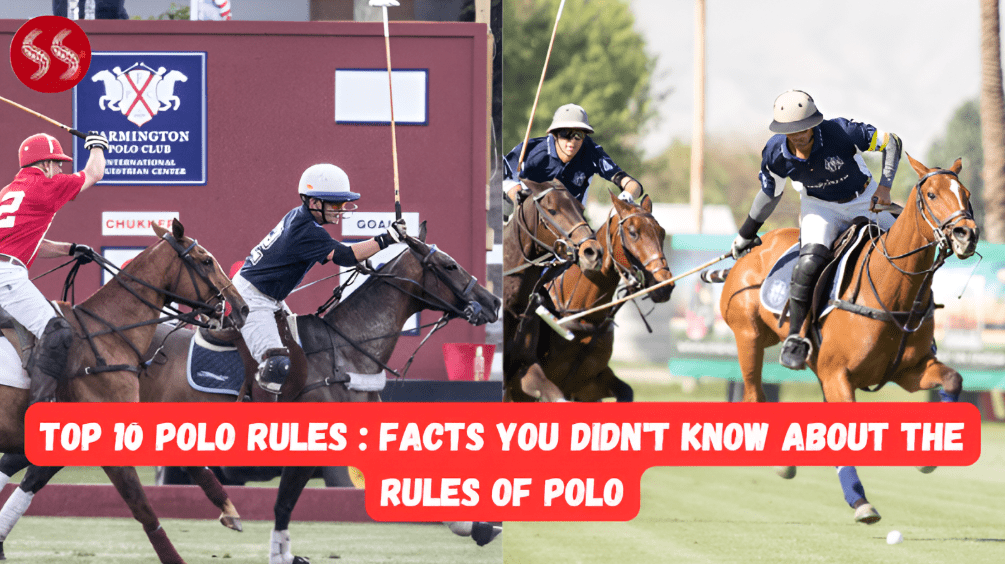Polo, often hailed as the “Sport of Kings,” is a game of incredible speed, strategy, and horsemanship. While many people are familiar with the basic concept of two teams on horseback hitting a ball with a mallet, the intricacies of its rules are what truly make the game so captivating and fiercely competitive. The rules of polo, formalized over centuries, are a complex system designed primarily for the safety of the players and, most importantly, the ponies. A deep dive into the Top 10 Polo Rules reveals a world of strategic depth and historical context that is often overlooked.
Unlike other sports, a significant portion of the rules in polo are dedicated to preventing collisions and maintaining the flow of the game in a safe manner. These rules govern everything from a player’s right of way to how they can legally interfere with an opponent. Understanding these hidden layers of the game is essential to truly appreciate the skill of the players and the tactical genius of the teams.
This list of Top 10 Polo Rules will shed light on some of the lesser-known facts and surprising nuances that govern the game’s every move. From penalties to the role of the umpire, we will explore the key regulations that define the sport. This is a must-read for anyone who wants to go beyond the surface and truly understand the strategic brilliance behind a match. This is our definitive list of the Top 10 Polo Rules that every fan should know.
10. The Line of the Ball
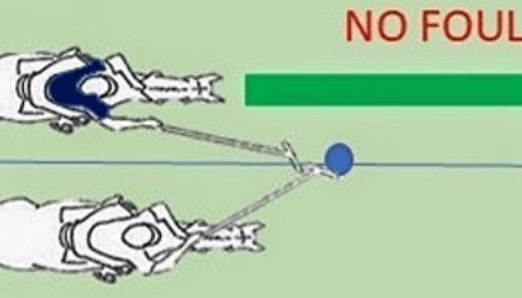
The “Line of the Ball” is arguably the most fundamental and important of all the rules in polo. It is an imaginary line that extends from the path of the ball, and it dictates a player’s right of way. The player who last hit the ball has the right of way along this line, and all other players must stay clear to avoid a foul. This rule is in place to ensure player safety and to maintain the flow of the game. It is a concept that every player must master, which is why it is one of the most significant of the Top 10 Polo Rules.
A surprising fact about this rule is how strictly it is enforced. A player who “crosses the line” is subject to a foul, which can result in a penalty shot for the opposing team. This is a severe punishment, as penalty shots in polo are often converted into goals.
The rule is so critical to the game’s safety and integrity that it dictates the entire strategy of the teams. The best players are masters of a rule that is so simple, yet so profound. The “Line of the Ball” is a foundational part of the game’s structure, and a key reason it is on our list of Top 10 Polo Rules.
| Stat | A foul for crossing the line of the ball is one of the most common penalties in a polo match, highlighting its importance. |
9. The “Hook” Rule
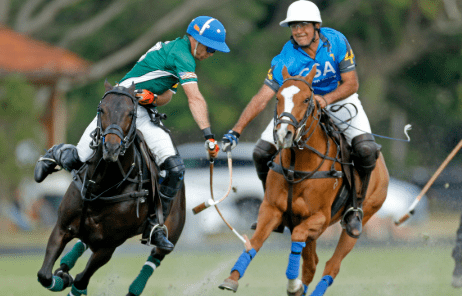
In polo, a player can legally interfere with an opponent’s shot by “hooking” their mallet with their own. However, this is one of the Top 10 Polo Rules with very specific and strict limitations. A player can only hook an opponent’s mallet when they are on the same side as the ball, and they must not hook a player who is on the opposite side of their mallet, as this would be considered a foul. The rule is in place to allow for defensive play without endangering the players or their ponies.
A fascinating fact about the “hook” rule is how it’s used strategically. The hook is a great defensive tool that can stop a player from scoring, but it’s also a high-risk maneuver. If a player hooks an opponent’s mallet illegally, it can result in a foul. This means that a player must have a perfect understanding of the timing and the rules to execute a successful hook.
The hook is a clear example of the fine line between an aggressive play and a foul, making it a perfect entry for our list of Top 10 Polo Rules. The strategic nuance of this rule is what makes it one of the most interesting of the Top 10 Polo Rules.
| Stat | A player can only legally hook a mallet from a position that is on the same side of the opponent as the ball. |
8. The “Ride-Off” Rule
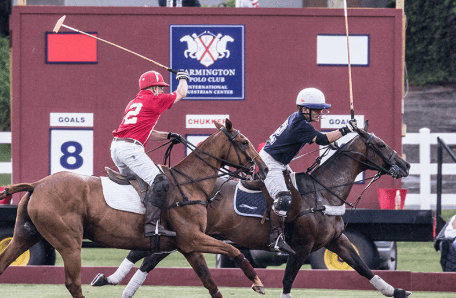
A “ride-off” is a legal maneuver in polo where a player can ride their pony alongside an opponent’s pony to push them off the line of the ball or to a different position. This is one of the Top 10 Polo Rules that allows for physical contact and is a key part of the game’s fierce nature. However, there are strict limitations on how a ride-off can be performed. The player must ride their pony parallel to the opponent’s pony and cannot ride at a dangerous angle. The rule is in place to allow for a physical game while ensuring the safety of the horses and the players.
An interesting fact about the “ride-off” is that it is often used as a way to create space for a teammate. A player can use a ride-off to push an opponent out of the way, giving their teammate a clear shot at the ball. The best players are masters of the ride-off and can use it to completely change the momentum of the game. The physicality and strategic importance of this rule are why it is on our list of Top 10 Polo Rules. The legality of this physical contact is what makes this rule one of the most surprising of the Top 10 Polo Rules.
| Stat | The “ride-off” is a legal maneuver, but any dangerous or intentional collision is considered a foul and is subject to a penalty. |
7. The “Right of Way” Rule
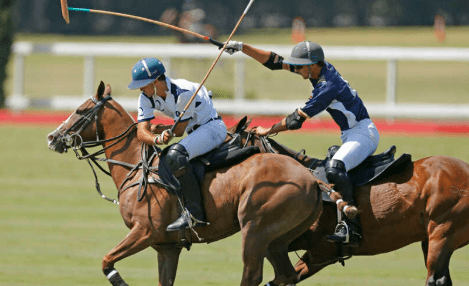
The “Right of Way” rule is a crucial component of polo safety. It is a simple concept: a player who is on the line of the ball has the right of way, and all other players must yield to them. This rule is in place to prevent collisions and to ensure that the game flows smoothly. It is one of the most important of the Top 10 Polo Rules, and every player must have a perfect understanding of it to play the game safely.
A fascinating fact about this rule is that it is often used as a defensive tool. A player who is on the right of way can use it to force an opponent into a difficult position, or to create a path for their teammate. This rule is a great example of how a defensive move can be turned into an offensive advantage. The “Right of Way” is a core concept that dictates the entire game, and a major reason why it is on our list of Top 10 Polo Rules. The way this rule dictates strategy is why it is one of the most critical of the Top 10 Polo Rules.
| Stat | A player who is not on the right of way and interferes with a player who is, will be penalized with a foul. |
6. The “Backshot” Rule

The “backshot” rule is a crucial offensive and defensive play in polo. It is a shot that is hit in the opposite direction of a player’s horse’s movement, and it is often used to clear the ball from a team’s defensive zone or to create a new line for an attack. This is one of the Top 10 Polo Rules that requires a high level of skill and precision, and the best players are masters of the backshot.
A surprising fact about the “backshot” is how it can be used to control the tempo of the game. A player who is a master of the backshot can use it to slow down a fast-paced game or to change the direction of an attack. This rule is a great example of how a single play can have a huge impact on the game. The “backshot” is a key part of a player’s arsenal, and a major reason it is on our list of Top 10 Polo Rules. The strategic value of this shot is why it is one of the most interesting of the Top 10 Polo Rules.
| Stat | The backshot is a crucial part of a polo player’s repertoire, and a team that has a player who is a master of the backshot has a huge advantage. |
See More :
5. The “Tackling” Rule
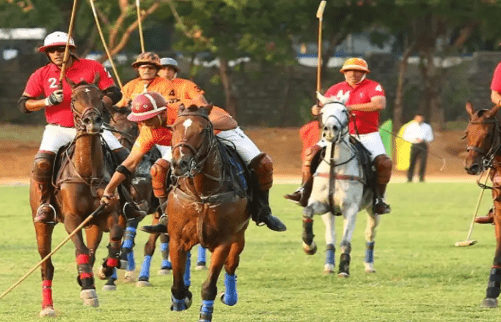
In polo, a player can legally interfere with an opponent’s play by “tackling” their horse. However, this is one of the Top 10 Polo Rules with very strict limitations. A player can only tackle an opponent’s horse from the side, and they must not tackle a horse from the front or back, as this would be considered a dangerous foul. The rule is in place to allow for defensive play without endangering the horses or the players.
An interesting fact about the “tackling” rule is how it’s used to put pressure on a star player. A player can use a legal tackle to push a star raider out of the way, giving their teammates a chance to clear the ball. This rule is a great example of how a team can work together to stop a single player from dominating the game.
The “tackling” rule is a key part of the game’s defensive strategy, and a major reason it is on our list of Top 10 Polo Rules. The legal use of horse-on-horse contact is what makes this one of the most exciting of the Top 10 Polo Rules.
| Stat | A legal tackle can only be made from the side and not at a dangerous angle, as this would be considered a foul. |
4. The “Safety” Rule

The “Safety” rule is a crucial component of polo. It is a rule that governs how a game is restarted after a foul. When a foul is committed, the umpire can award a penalty shot to the opposing team. The penalty shot is a free hit from a certain distance, and it is a great opportunity for a team to score a goal. This is one of the Top 10 Polo Rules that ensures that the game remains fair and that teams are penalized for their mistakes.
A surprising fact about the “Safety” rule is that a team can be awarded a penalty goal even if the ball does not go into the goal. If a team commits a foul that prevents a sure goal, the umpire can award a penalty goal to the opposing team. This rule is in place to ensure that a team does not benefit from a foul. The “Safety” rule is a key part of the game’s structure, and a major reason why it is on our list of Top 10 Polo Rules.
The severity of penalties is what makes this one of the most important of the Top 10 Polo Rules.
| Stat | The penalty shot is a free hit from a distance of 30, 40, or 60 yards, depending on the severity of the foul. |
3. The “Throw-In” Rule

The “Throw-In” rule is a crucial component of polo that governs how a game is started and restarted. At the beginning of a game, or after a goal is scored, the umpire “throws in” the ball between the two teams. This is one of the Top 10 Polo Rules that ensures that the game is started in a fair and orderly manner.
An interesting fact about the “Throw-In” is how it is used as a strategic tool. The best players are masters of the throw-in and can use it to create an immediate advantage for their team. A player can use their position and their mallet to deflect the ball to a teammate, giving them a clear path to the goal. The “Throw-In” is a great example of how a simple rule can have a huge impact on the game, and a major reason why it is on our list of Top 10 Polo Rules. The tactical aspect of this rule is what makes it one of the most interesting of the Top 10 Polo Rules.
| Stat | The umpire “throws in” the ball from the side of the field after a foul or from the center of the field after a goal is scored. |
2. The “Handicap” Rule

The “Handicap” rule is a unique and important component of polo. It is a rating system that is used to rank players based on their skill level. A player’s handicap is a number from -2 to 10, with 10 being the highest rating. The rule is in place to ensure that teams are evenly matched and that the game remains fair and competitive. This is one of the Top 10 Polo Rules that makes the game so unique.
A surprising fact about the “Handicap” rule is that it is a fluid system. A player’s handicap can be changed at any time, based on their performance in a game. This means that a player who is performing well can have their handicap increased, while a player who is struggling can have their handicap decreased. The “Handicap” rule is a great example of how the sport is constantly evolving and adapting. The fairness and balance this rule brings to the game is why it’s a key part of the Top 10 Polo Rules. The dynamic nature of this rating system is what makes it one of the most intriguing of the Top 10 Polo Rules.
| Stat | There are only a handful of players in the world who have achieved a 10-goal handicap, a testament to their exceptional skill. |
1. The “Mallet” Rule
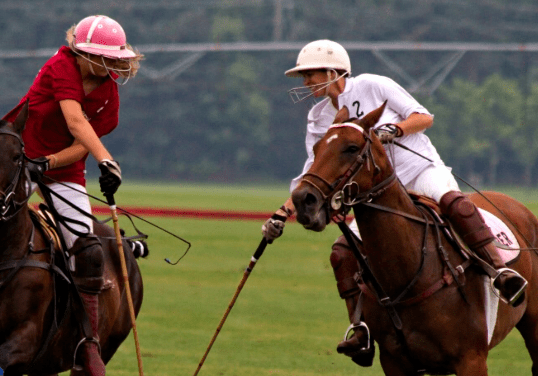
The “Mallet” rule is a crucial component of polo. It is a rule that governs how a player can use their mallet. A player can only hit the ball with the flat side of their mallet, and they must not use the head of their mallet to hit the ball, as this would be considered a dangerous foul. The rule is in place to ensure that the game remains fair and that players are not at risk of injury. This is one of the most fundamental of all the Top 10 Polo Rules.
An interesting fact about the “Mallet” rule is how it’s used to create different shots. A player can use their mallet to hit the ball in a variety of ways, from a powerful shot that sends the ball flying to a gentle tap that guides the ball to a teammate. The best players are masters of the mallet and can use it to create a variety of shots that keep their opponents guessing.
The “Mallet” rule is a key part of the game’s strategy, and a major reason why it is at the top of our list of Top 10 Polo Rules. The precision required for this rule is what makes it the greatest of all the Top 10 Polo Rules.
| Stat | A polo mallet is typically made of bamboo or composite wood, and its head is made of hard wood, often painted to identify the team. |
FAQs
Q1: Is there an offside rule in polo?
A1: No, there is no offside rule in polo, which is one of the key differences from other sports, as highlighted in our list of Top 10 Polo Rules.
Q2: Can a player hit the ball with their hand in polo?
A2: No, a player cannot hit the ball with their hand, as the rules strictly state that the ball can only be hit with a mallet, a fundamental rule of the game, as seen in our list of Top 10 Polo Rules.
Q3: What is the highest handicap a player can achieve in polo?
A3: A player can achieve a 10-goal handicap, which is the highest rating and a testament to their skill and contribution to their team, a status held by the best players in the world. This is a crucial element of our list of Top 10 Polo Rules.
Read More :

